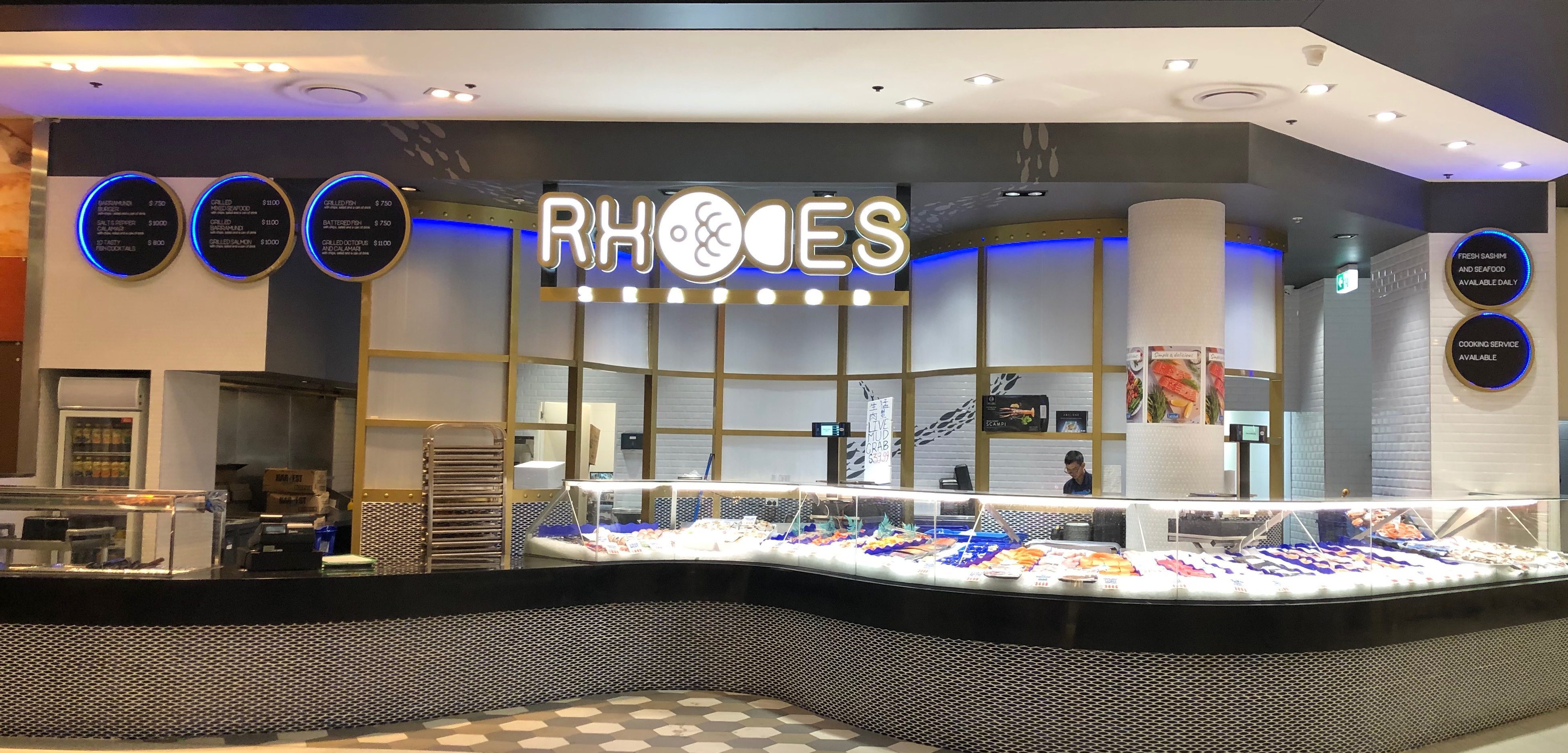Sponsored by Rhodes Seafood at Rhodes Waterside

Rhodes Seafood at Rhodes Waterside has recently had a facelift so it may look different but you’ll recognise it by its same beautiful seafood, same friendly staff and same daily queues for its mini in-house fish ‘n chips shop.
On our recent visit, we purchased the marinara mix, green prawns and flathead filets and used it all to make a spaghetti marinara for a birthday lunch. The kids wolfed it down (as they do anything with spaghetti!). The seafood was fresh, held together beautifully and had a lovely sweet taste.
Located near Coles, they’re a great place to try if you’re new to seafood and need some extra help or you’re a seasoned seafood chef who wants variety and that fresh factor!
We’ve put together some tips for buying seafood that you can consider when shopping at Rhodes Seafood.
 |
 |
Freshness – what to look for
For filleted fish
- Look for those with a translucent sheen, a bright sparkling colour and a fresh, clean aroma.
- Any bloodspots should be bright red—not brown.
For whole fish
- The eyes on a whole fish should be clear and not foggy.
- Skin should look shiny, metallic and clean. Any dullness or discolouration is another sign of age.
- Buying whole fish means that you can ask the fishmonger to fillet it for you and ask them to put the head and frame in a separate bag for you to take home to make a stock.
For shellfish
- Prawns flesh should be translucent and shiny with little or no odor.
- Shellfish should be tightly closed or close when the shell is tapped. If they don’t close when tapped, do not select them.
- Live crabs and lobsters should show some leg movement. They spoil rapidly after death, so select only live crabs and lobsters.
It’s best to eat fish on the same day as it’s purchased, or at most, the day after that.
Befriend the fishmonger
Get to know your fishmonger and you’ll soon feel comfortable asking for ‘catch of the day’ bargains or recommendations on new varieties. Your fishmonger can point you in the direction of seasonal, lesser-known, short-lived species that will be value for money. Don’t forget to ask the best way to prepare varieties you’re unfamiliar with.
Buy local
Buy local fish – they’re likely to be fresher, having travelled less, and will also support the Australian fishing industry. It has been estimated that around 70 per cent of the edible seafood Australians consume (by weight) is imported, predominantly from Asia.
Choose wild over farmed fish
Farmed fish are raised commercially in tanks or enclosures. Likened to battery hen enclosures, these tanks can be problematic in terms of the health conditions of the fish, with the needs for antibiotics and other medications to be used on a regular basis. Also, farmed fish are often fed foods they wouldn’t normally eat (that aren’t even found in the ocean) so in that regards they aren’t optimal nutrition wise. Another issue is that fish farms can negatively impact the local ecosystem in which the farm is situated.
Where possible, avoid farmed fish and buy wild. Ask your fishmonger to identify which fish is which!
Don’t ignore the little guys!
Sardines, herring, whitebait and anchovies are all wild and will never be farmed. They’re cheap, can improve heart, brain and eye health and help prevent cancer plus many more health benefits! Don’t ignore them because they don’t have a PR team as good as Barramundi!














